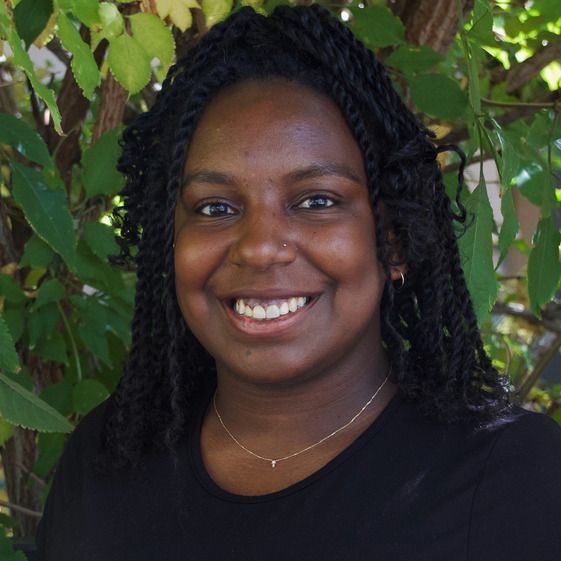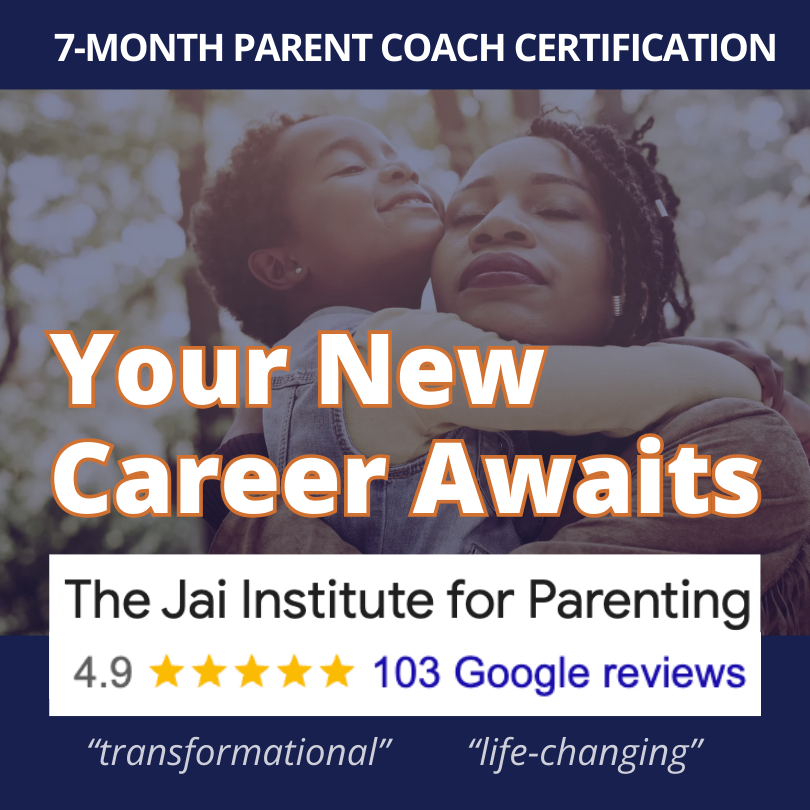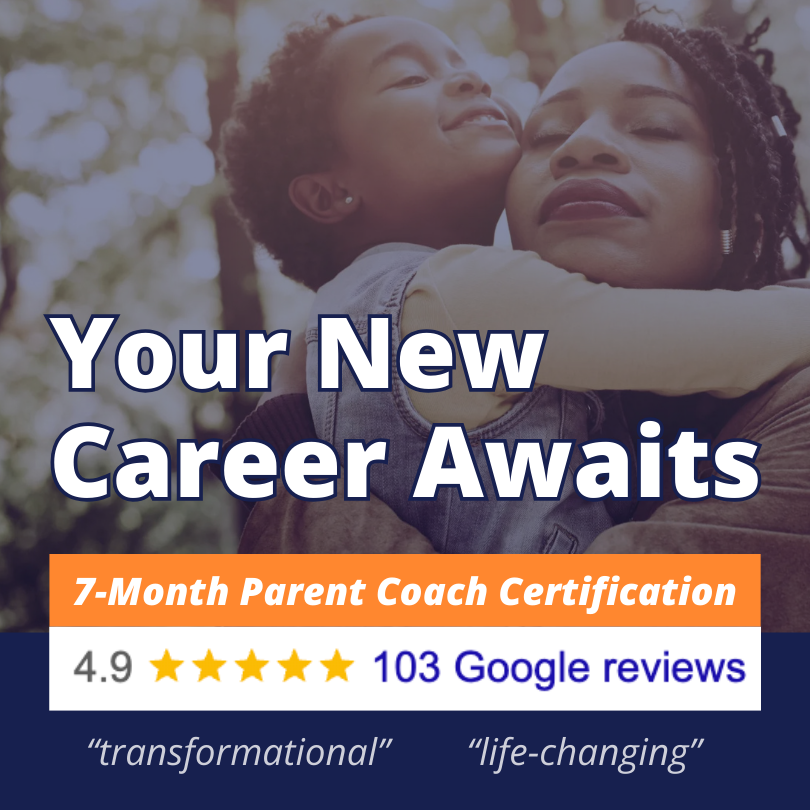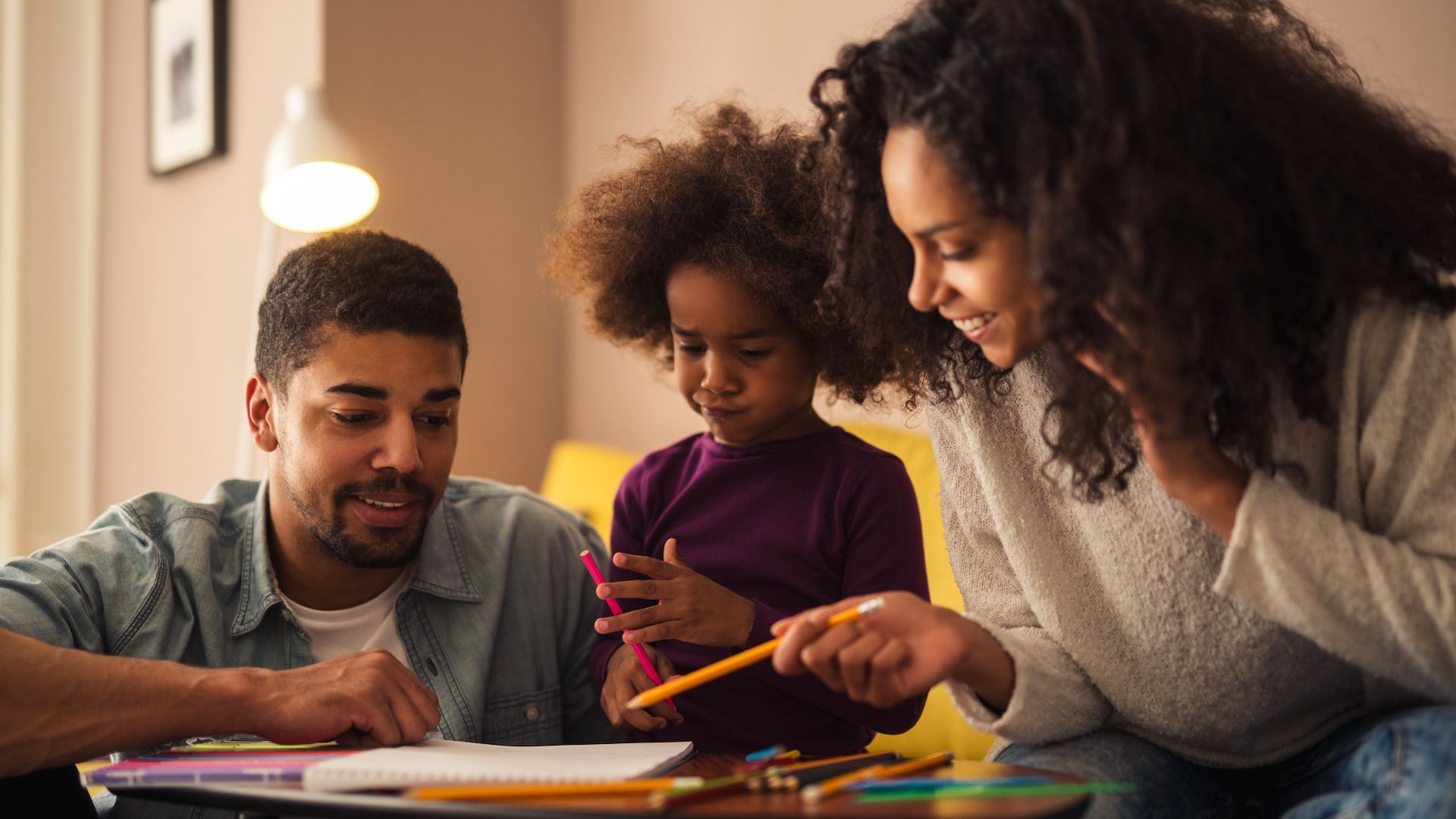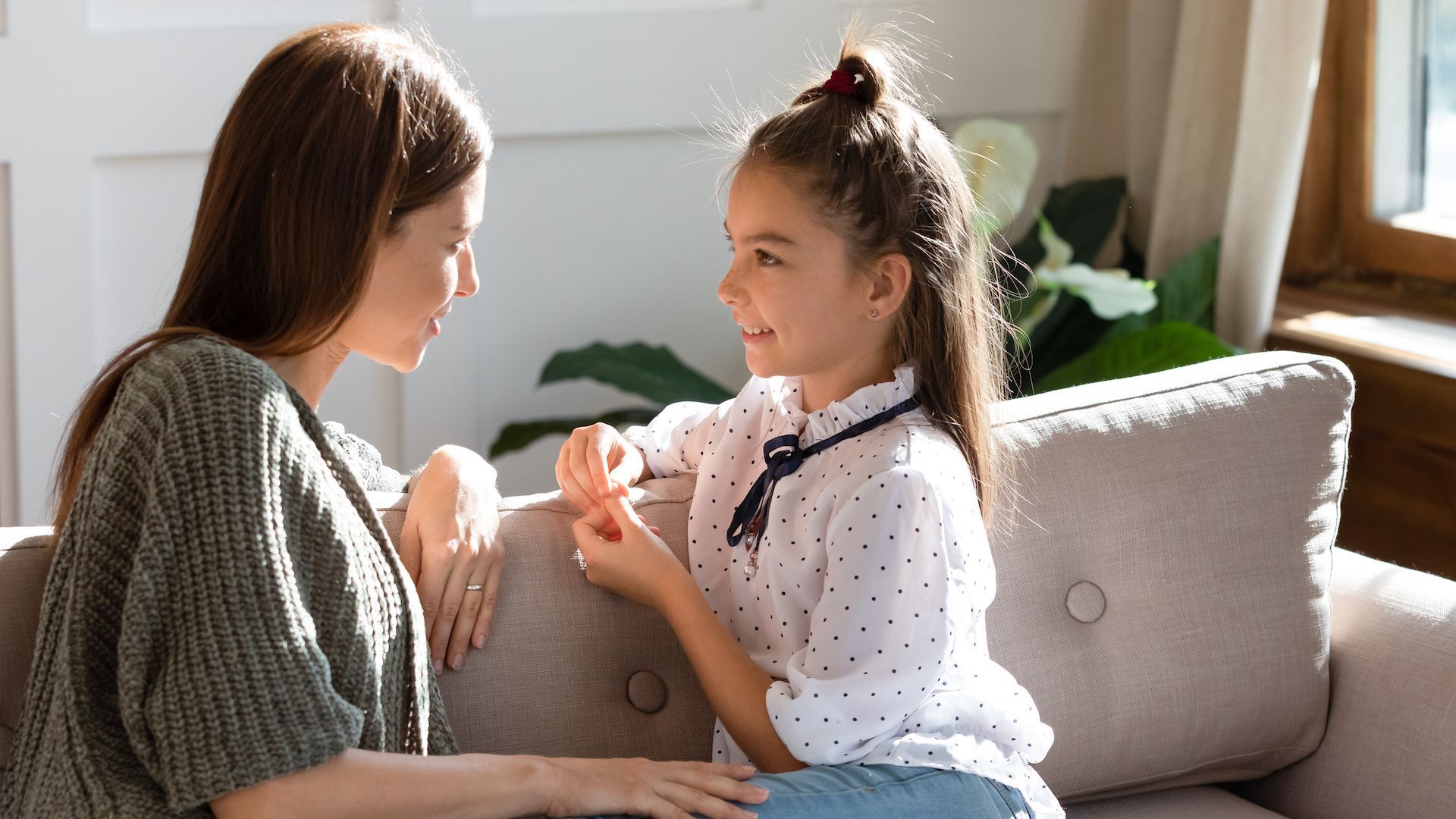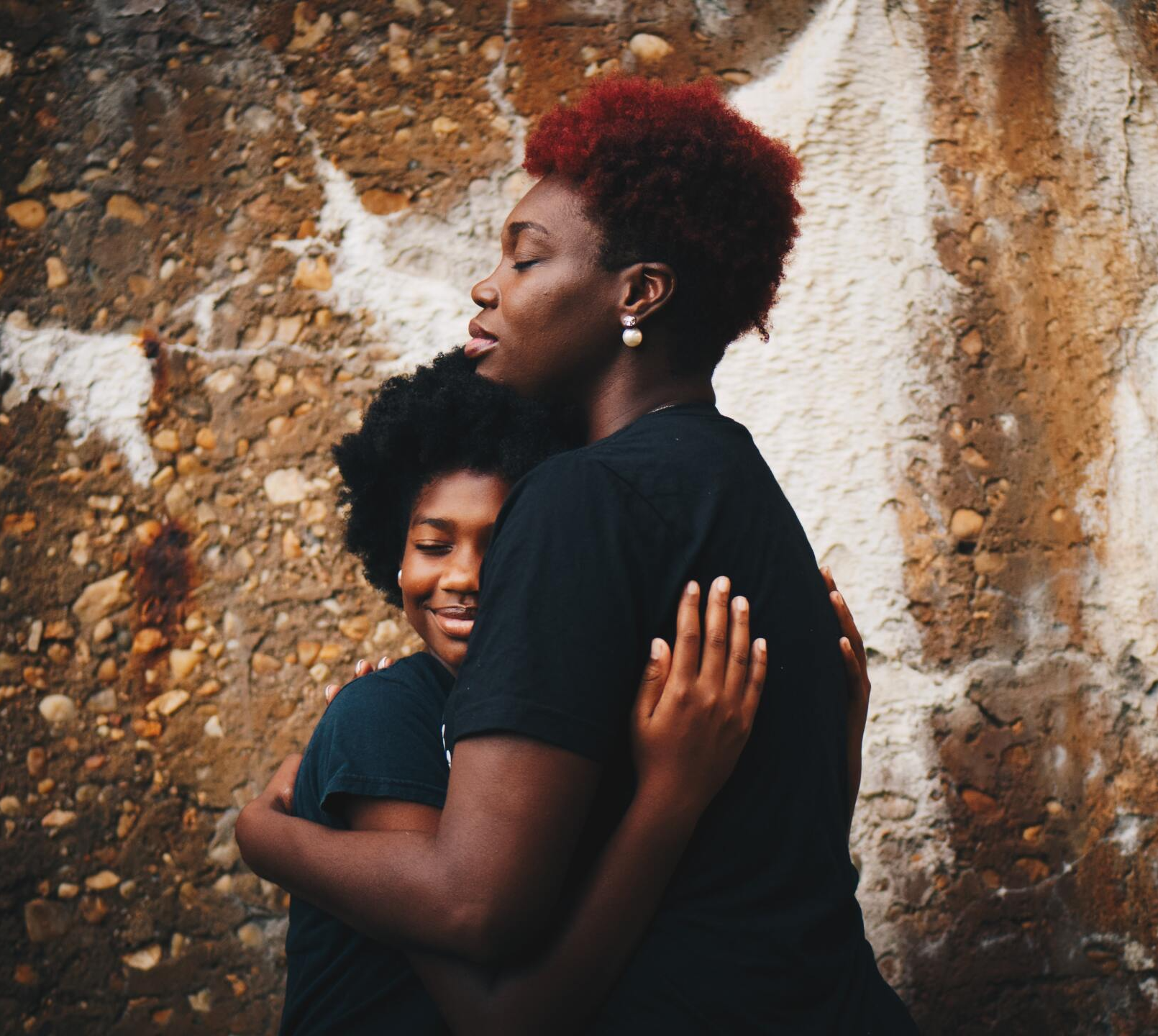Empowered Educator: What Parenting Science Taught Me About Classroom Behavior

My undergraduate teacher education included one single course on classroom management. I finished that class with the impression that classroom rules, firm consequences, and establishing “the look” for that one behavior student would be enough. *insert wide-eyed emoji*
The challenges of my first year of teaching were overwhelming and eye-opening. I had rules, consequences, and the “get it together” glare but still spent most of the class periods in power struggles, redirecting, and recovering from behavior disruptions.
The experiences of that year motivated me to learn as much as possible about behavior and emotions to ensure I was prepared for classroom behavior while supporting my students’ emotional growth.
I pursued a master’s degree in Emotional and Behavioral Disorders, attended countless classroom management workshops and professional developments, and devoured every book I could find. While I achieved some short-term success, I still found myself heavily dependent on consequences, rewards, and threats.
I discovered The Jai Institute for Parenting on Instagram, and what they offered was contrary to everything I had been taught as a teacher. I was introduced to concepts such as
emotional regulation, triggers, child development, and how these factors influence behavior. This is a huge contrast to the common wisdom that students' misbehavior is intentional and purposeful.
I could finally imagine a classroom where I could remain true to my natural temperament without resorting to raising my voice or using harsh tactics. I could cultivate a safe, nurturing, and effective learning environment without compromising my authenticity. I realized I could maintain structure and engagement without relying on punitive measures or attempting to 'control' my students through intimidation. Moreover, I would be an empowered teacher with the skills and resources to support my students’
brain development and emotional growth. I instantly knew this certification would be the key to transforming my classroom management.
I wasn’t a parent, nor did I have plans to start my own parental coaching business immediately. I joined because I needed to change what was happening in my classroom.
I have used all the tools I learned at Jai by simply adjusting them from parenting to teaching. Below, I’ll show you how to apply
The Five Pillars of Empowered Parenting, one of the foundational models from the Jai Institute's program, to your classroom.
Could Parent Coaching be right for you?
Discover how educators are incorporating Parent Coaching into their skill set to create better outcomes for children!
Integrating the Empowered Parenting Model
Pillar 1: Empowered Communication
Empowered communication draws its foundation from the work of Dr. Marshall Rosenberg and his nonviolent communication framework. This approach emphasizes the importance of expressing ourselves through the language of feelings and needs.
"Tell me you're disappointed with the unfinished chores you see. But calling me 'irresponsible' is no way to motivate me."
This statement from Dr. Rosenberg beautifully illustrates the power of articulating our emotions and requirements without resorting to judgmental labels, fostering more effective and compassionate interactions.
As I delved into and experienced this framework through the Jai Institute, I envisioned my students communicating with me in a more constructive manner. Rather than exclaiming, "I hate this stupid class," they might express, "I'm frustrated when you go through the PowerPoint slides that fast." This transformation required me to both learn and unlearn my approach to conflict resolution. I came to understand that our default methods of interaction often lead to unintended conflicts while simultaneously recognizing that my students’ habitual ways of communicating could also create unnecessary tension.
How to Integrate:
- Model Non-Judgmental Observation: Instead of labeling student behavior as “good” or “bad,” describe what you observe without judgment. For example, say, “I noticed you didn’t turn in your assignment today,” instead of, “You were irresponsible for not doing your homework.”
- Use “I” Statements: When addressing issues, clearly communicate your feelings and needs. For example, “I feel concerned when assignments are late because it affects your learning progress.” instead of “Stop being irresponsible.”
- Make Clear Requests: Instead of giving vague instructions, be specific and positive. Instead of saying, “Don’t be disruptive,” try, “Please raise your hand when you want to speak.”
While these communication strategies seem simple, shifting from our default way of approaching conflict takes time. Start by noticing how you phrase things and make changes whenever you catch yourself.
This simple change will help students develop healthier ways toexpress their feelings and needs and not aid in reinforcing these limiting beliefs.
Pillar 2: Emotional Intelligence (EQ)
Emotional Intelligence is the ability to manage one's emotions and understand the emotions of others. It also emphasizes the understanding that emotions are a natural part of the human experience.
For instance, I came to recognize that my students’ frustration and disappointment were valid when they encountered an unexpected change in their lunch plans. Imagine their anticipation building throughout the morning, having seen pizza listed on the day's menu, only to arrive at the cafeteria and find the notorious mystery meat being served instead. Their emotional response to this situation was entirely normal and understandable.
More importantly, the incident above offered valuable lessons about emotional dysregulation. This insight proved crucial in comprehending misbehavior in the classroom. I began to see how seemingly small disappointments or unexpected changes could trigger larger emotional responses, which in turn might manifest as disruptive behavior. This connection between emotions and actions helped me approach classroom management with moreempathy and interventions addressing the root causes rather than just reacting to its symptoms.
How to Integrate:
- Model Emotional Awareness: Share your emotions with students in an age-appropriate way. For example, if you’re feeling stressed, you might say, “I’m feeling a little overwhelmed today, so I’m going to take a deep breath and dance before we start our lesson.” (Perfect time to show your “silly” dance moves.)
- Teach Emotional Vocabulary: Start each morning with an emotion of the day. Discuss what makes them feel these emotions and brainstorm ways to regulate them.
- Encourage Empathy: Incorporate activities that prompt students to consider others’ perspectives. Role-playing or discussing characters’ feelings in stories can help them develop empathy.
By fostering emotional intelligence, you help students become more aware of their own emotions and those of others. This pillar also helps them practice empathy and engage their logical thinking.
Pillar 3: Nervous System Regulation
Our nervous system constantly interprets signals from our environment, categorizing them as safe, perceived danger, or acutely threatening. Being aware of our stress response can help us recognize the impulsive responses to behavior and help our students do the same.
Likewise, our students’ nervous systems translate the environment to keep themselves safe, too! They are experiencing triggers and primitive responses to stress. Mona Delahooke, inBeyond Behavior, mentions, “Is this intentional, purposeful misbehavior, or does this behavior represent the child’s developmental challenges and/or reflexive responses to perceive a threat, or a combination of both?”
The aim isn’t to create a completely stress-free classroom, as that’s neither realistic nor beneficial for student growth. Instead, our goal is to expand our students’ capacity to handle challenging situations and equip them with calming strategies unique to their nervous system.
How to Integrate:
- Model Regulation: When faced with challenging behavior or frustrating situations, focus on regulating your own nervous system first.
- Teach Regulation Techniques: Incorporate a wide range of sensory calming tools that students can use when they feel overwhelmed. For example, guide students to run in place or hum a song when anxious or frustrated.
- Create a Calming Corner: Designate a quiet space in the classroom where students can go to practice regulation techniques. This can be a comfortable corner with sensory tools, like stress balls or calming visuals. I usually keep this space right next to my desk, so I’m there to co-regulate.
By prioritizing nervous system regulation, you create an environment where students observe emotional regulation from you and learn how to regulate, too.
Pillar 4: Child Development & Mindsight
When we demand behavior or executive functioning skills that surpass a student’s current abilities, it often results in mutual frustration. However, this doesn’t mean lowering academic and school expectations. We can utilize tools and techniques that are congruent with their brain development.
Behavior is a powerful form of communication, especially when it comes to expressing met or unmet needs. Just as an infant's cry signals hunger, discomfort, or a desire for connection, our students' behaviors – even the challenging ones – are often attempts to convey needs they can't articulate verbally.
Understanding what's happening in our students' brains requires a skill Dr. Daniel Siegel calls "mindsight" – the ability to see inside our own minds and the minds of others. This capacity for insight and empathy is crucial in the classroom, where students may lack the language or self-awareness to express their emotions and needs directly. Empathy becomes our tool for decoding these unspoken messages.
How to Integrate:
- Set Realistic Expectations: Tailor your expectations to the developmental stage of your students. For example, recognize that younger children may struggle with impulse control and plan activities accordingly.
- Practice Mindsight: Look beyond surface behaviors to understand the underlying needs or emotions driving them. If a student is acting out, consider what might be causing stress or frustration rather than immediately disciplining the behavior.
- Use Empathy Guesses: When a student is upset, try to articulate what they might be feeling. For example, “I wonder if you’re feeling upset because the math problem was challenging.”
By incorporating childhood brain development knowledge and mindsight into your behavior plan, you will gain a deeper understanding of your students' inner world and be better equipped to respond.
Pillar 5: Attachment Science
As educators, we must recognize that the way we were parented inevitably influences how we respond to our students' behaviors. Our past experiences can color our perceptions and reactions in the classroom. This sometimes results in our students not knowing what to expect from us in times of distress.
I found attachment science to be extremely helpful as I experienced a less-than-ideal childhood and insecure attachments. Having the opportunity to make sense of my childhood andheal my past wounds enabled me to earn a secure relationship with myself and show up as an emotionally responsive adult for my students.
How to Integrate:
- Be a Consistent, Caring Presence: Strive to be a reliable and responsive figure in your students’ lives. Show them that they can trust you by being consistent in your expectations and supportive in your interactions.
- Respond to Emotional Needs: When students express emotions, respond with sensitivity and care. For example, if a student is upset, offer comfort and a listening ear instead of dismissing their feelings.
- Repair Ruptures: If there’s a conflict or misunderstanding, make an effort to repair the relationship. Apologize if needed and take accountability. That quick conversation can help our students replace a story of self-blame with self-trust, connection, and safety.
By applying attachment science principles in the classroom, you help students develop secure, trusting relationships, which are crucial for their overall well-being and success.
Important note: Before joining the program, I consumed every Jai video I could find. I knew what they taught aligned with how I wanted to interact with my students. But while the videos and books provided valuable information, it wasn’t until I actually joined the program that I experienceda true transformation. This program genuinely changed my life. I began looking forward to modeling emotional regulation in the classroom. I named my feelings out loud and proceeded to dance as my calming tool. Without yelling or relying on punitive methods, my students would notice and say, "You’d better pay attention. Ms. Freeman is frustrated and is doing those dances again. Let’s quiet down so she can stop."
Are you an educator looking to deepen your impact on students and their families? Join our
Parent Coaching Certification Program at the Jai Institute for Parenting. Over seven transformative months, you’ll acquire essential skills and insights to foster stronger connections with your students, enhancing their learning experiences both at home and in school. This program empowers you to support students by creating a more peaceful and cooperative environment, making a lasting difference in their lives. Don’t miss this opportunity to expand your professional toolkit and transform your approach to education—apply now and take the first step toward
becoming an empowered teacher!
Meet Your Author,
Shaella Freeman
Shaella Freeman is a Jai Master Certified Parenting Coach, former educator, and cool aunt to her nieces and nephews. She is passionate about reimagining education and discipline with empathy, connection, and communication.
In her work, Shaella combines her M.Ed. in Emotional and Behavioral Disorders with relational safety strategies to empower educators in the classroom.
When she is not coaching, she is at the gym, watching Abott Elementary, or on FaceTime with her nieces and nephews.
Connect with Shaella at: shaellafreeman.com
READ MORE:
Curious for more?


